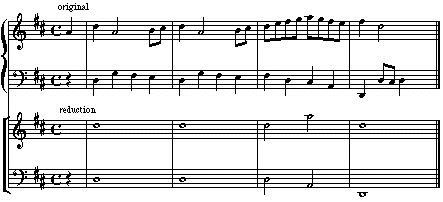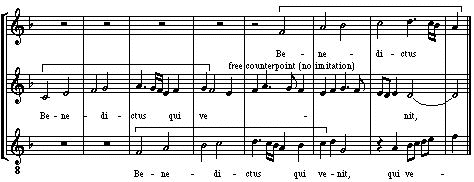
Here is an excerpt from James Romig’s Sonnet 2, played by John McMurtery. 1 (“Granada”) of Albeniz’ Suite Espanola for guitar The latest hit tune by a major pop solo vocalist The opening section of the “Overture” Of Handel’s “Messiah” (The second section of the overture is polyphonic) Monophony 1” The “March of the Toreadors” from Bizet’s Carmen No. Listen for traditional music (most modern-composed music, even from these cultures, has little or no heterophony) in which singers and/or instrumentalists perform the same melody at the same time, but give it different embellishments or ornaments.Ī classic Scott Joplin rag such as “Peacherine Rag” or “The Easy Winners” The “graduation march” section of Edward Elgar’s “Pomp and Circumstance No. Some Middle Eastern, South Asian, and Native American music traditions include heterophony. There are no examples of heterophonic music that would be familiar to most Western listeners. In heterophony, there is only one melody, but different variations of it are being sung or played at the same time. HeterophonicĪ heterophonic texture is rare in Western music. Think of a favorite pop or gospel tune that, near the end, has the soloist “ad libbing” while the back-up singers repeat the refrain. Music that is mostly homophonic can become temporarily polyphonic if an independent countermelody is added. Most music for large instrumental groups such as bands or orchestras is contrapuntal at least some of the time. (Even if there is only one melody, if different people are singing or playing it at different times, the parts sound independent.) Much Baroque music is contrapuntal, particularly the works of J.S. (See counterpoint.) Examples of Polyphony Rounds, canons, and fugues are all polyphonic. If more than one independent melody is occurring at the same time, the music is polyphonic. Polyphonic music can also be called polyphony, counterpoint, or contrapuntal music. Most traditional Protestant hymns and most “barbershop quartet” music is in this category.Ī singer accompanied by a guitar picking or strumming chords.Ī small jazz combo with a bass, a piano, and a drum set providing the “rhythm” background for a trumpet improvising a solo.Ī single bagpipes or accordion player playing a melody with drones or chords. Examples of HomophonyĬhoral music in which the parts have mostly the same rhythms at the same time is homophonic. are not independent) or because their main purpose is to fill in the chords or harmony (i.e. But when they are sung or played with the melody, it is clear that they are not independent melodic parts, either because they have the same rhythm as the melody (i.e. They may follow many of the rules of well-written counterpoint, and they can sound quite different from the melody and be interesting to listen to by themselves. In most well-written homophony, the parts that are not melody may still have a lot of melodic interest. All other parts provide accompaniment or fill in the chords. Homophony has one clearly melodic line it’s the line that naturally draws your attention. More informally, people who are describing homophonic music may mention chords, accompaniment, harmony or harmonies. Homophonic music can also be called homophony. One person whistling a tune A single bugle sounding “Taps” A group of people all singing a song together, without harmonies or instruments A fife and drum corp, with all the fifes playing the same melody Homophonic It is sometimes called monody, although the term “monody” can also refer to a particular type of solo song (with instrumental accompaniment) that was very popular in the 1600’s. Monophonic music can also be called monophony. There may be rhythmic accompaniment, but only one line that has specific pitches.

Monophonic music has only one melodic line, with no harmony or counterpoint. For specific pieces of music that are good examples of each type of texture, please see the Activity section below.

Here are definitions and examples of the four main types of texture. There are many informal terms that can describe the texture of a piece of music (thick, thin, bass-heavy, rhythmically complex, and so on), but the formal terms that are used to describe texture all describe the relationships of melodies and harmonies. Below you will find some of the formal terms musicians use to describe texture, and also some suggestions for introducing young students to the idea of musical texture and to these terms. It might be made up of rhythm only, or of a melody line with chordal accompaniment, or many interweaving melodies.


 0 kommentar(er)
0 kommentar(er)
